Home » Construction Blogs
Category Archives: Construction Blogs
2021 Contractor of the Year: Pruss Excavation Refashions Fleet After Meeting Dual Flood Challenges
The construction lineage is deep in the Pruss family. Matt’s grandfather, Jim Sr., started Pruss Excavation in 1968. His father, also named Jim, joined him four years later, and Matt came on board in 2001.
But Matt’s start in construction goes much further back than 2001.

“I got on an excavator when I was 10 years old. When my dad told me to dig, I just kept on digging,” he says with a laugh. “Mom freaked out, but I enjoyed it.” And as he was growing up, both he and brother Scott, who now serves as superintendent with Pruss Excavation, pitched in when his father found himself shorthanded.
Matt went on to get a construction management degree, something he didn’t know was available until Freshman Day at the University of Nebraska. He had planned to go into business, but after the dean of the university’s construction management college learned his dad was a contractor, he convinced Matt to switch majors.
“We had some amazing professors who gave us real-world scenarios,” Matt says.
One example: it’s bid day and the students are estimating a project. The professor would go through the students with a handful of papers with vendor and sub quotes. “He would literally just throw them your way,” Matt recalls. “Some quotes didn’t have bonding and some didn’t include taxes, and you had figure out the good ones to develop the bid.”
Matt thought the exercise was exaggerated until he got back into the family business right after college. “It was not,” he says.

When Matt came on board, his father’s first instinct was to put him behind the controls of a machine, because he knew exactly how much operator/machine hours translated to the bottom line.
Matt had other ideas, though. Working in what then were company offices – in the basement of his parents’ home – he started estimating and soon bidding jobs that were outside of the company’s typical work of building terraces for area farmers.
“I know Pruss Excavation grew because of my education,” he now says. “We could get into the commercial side and chase bigger work.”
So the company began to expand, eventually moving from the basement office to a separate structure on the family farm in Dodge, Nebraska, one and a half hours northwest of Omaha.
Now Pruss Excavation logs $7 million to $10 million in annual revenues, has around 40 employees and does a variety of work, including dams and levees, roadwork grading, wetlands, landfill cell construction, site work and lagoons.
The transition from father to son was gradual as Matt took on bidding, contract management and submittals. And his brother Scott Pruss now manages several in-field duties, including serving as the firm’s quality control manager.
A turning point was a $3.4 million dam project in 2008; the company came in low by $13,000.
“It was a great job for us,” Matt recalls. Started right before the economy soured in the Great Recession, it also helped the company weather that economic storm.
Floodwaters
Pruss Excavation was to weather more storms, this time the meteorological variety. Major floods hit Nebraska in 2011 and 2019, and both changed the makeup of the company’s equipment fleet.
During the 2011 flood, Cat dealer NMC called and asked Matt if he still had the Challenger tractors with pull-behind scrapers. The company had eight at the time.
NMC was renting haul trucks to the U.S. Army Corps of Engineers on levee repair work after the flood, and the Corps decided the trucks weren’t the right equipment for the job. It was spending too much time building roads for the trucks and not enough time hauling dirt.
Pruss soon had six Challengers with pull-behind scrapers on the job and then bought five more from a dealer in Florida. Even that wasn’t enough, and it had to rent additional machines.
“By the time that project was done, we had 70 machines running, including 23 pull-behinds along with support equipment,” Matt says. “That was our huge, giant boost. Before, we were doing around $3 million a year, and with that project, we hit more than $8 million.”
It didn’t hurt that the job had a $43-an-hour federal wage. “I had guys from all over the country wanting to work for us,” Matt says. “Finding labor was not an issue.”
Of course, high demand comes with its own challenges. Pruss’s competition was doing the same thing, and everyone was scrambling for equipment and parts.
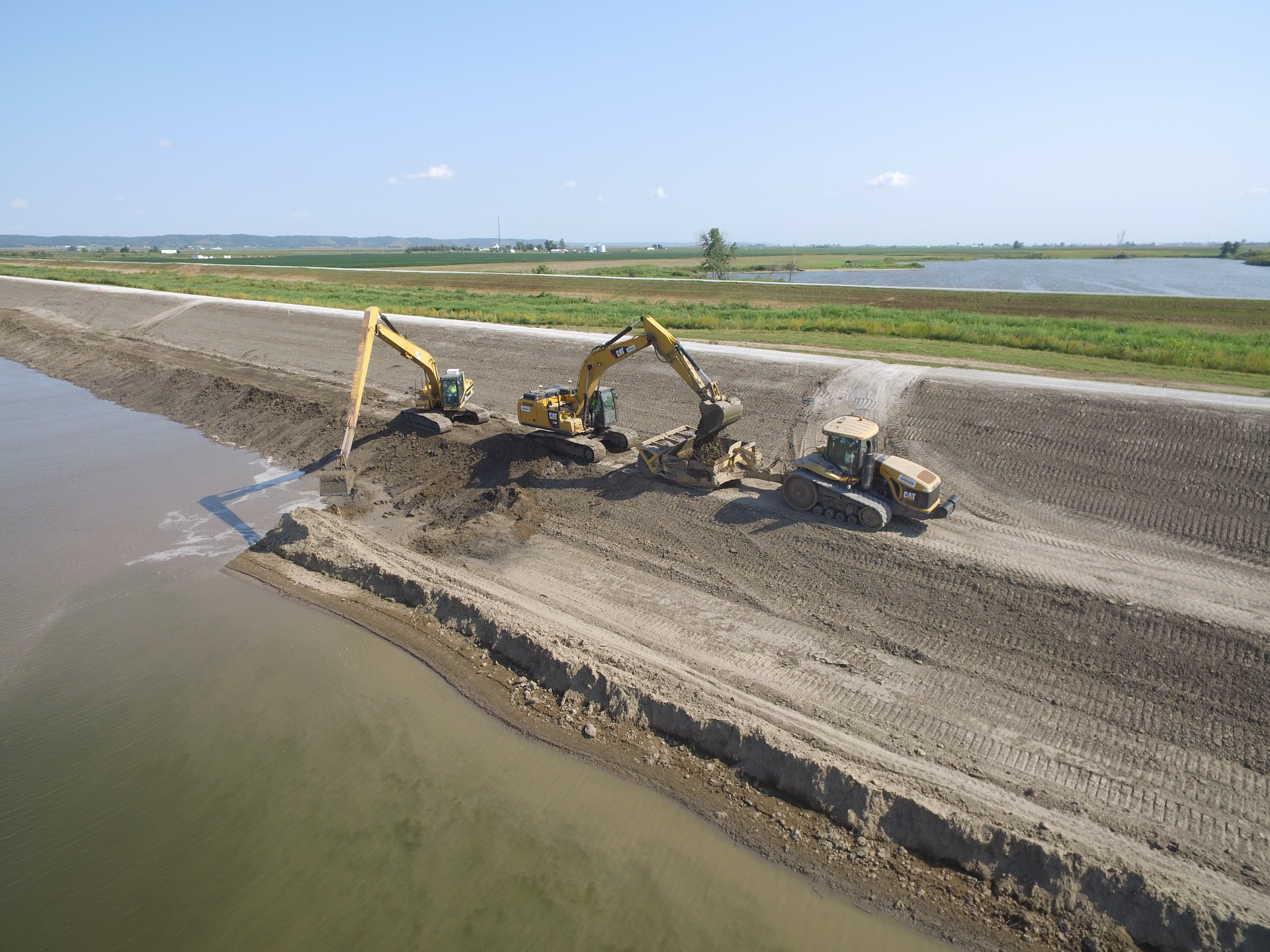
The 2011 and 2019 Nebraska floods helped Pruss Excavation up its equipment fleet and project management skills.Pruss ExcavationThe 2019 flood also had an equipment fleet impact, with Pruss buying six dozers to handle the flood mitigation work. “We were going in with 40 additional people, so I was buying things up like crazy,” he says. “We had nine dozers on that site running every day.” The job also racked up machine hours. “At one time we were working 12-hour days seven days a week. My operators were making amazing money.”
Pruss also put two mechanics on the 18-month job. “I knew stuff was going to fail and what we had to do to fix it,” he says.
In assessing the levee repairs done on the project, a reviewer with the U.S. Army Corps of Engineers ranked Pruss’s quality and scheduling as “exceptional.” The review said: “Not only was the levee repair a phenomenal effort and of exceptional quality, but the Pruss Excavation team even went out of their way to ensure that all work areas were clean and properly grade.”
The Corps took special note of how the two Pruss brothers worked together: “Matt and Scott’s combined teamwork really and truly enabled the success of this project…[they] were always synchronized in all efforts and activities and any absence by one was seamless with no disruption in performance.”
Regarding cost control, the Corps assessment added: “It was a skillful performance, and Matt’s pricing and responsiveness rivals that of much larger organizations observed over the past two years performing similar work. The best aspect of working with them is that they always construct a great product.”
Of course, the all-of-the-sudden levee repair work had to be managed with prior commitments.
“They had a very challenging project with us, and they continued to push through on our job and honor their obligations even while they were doing the levee work,” says Luke Ridder with Hawkins Construction.
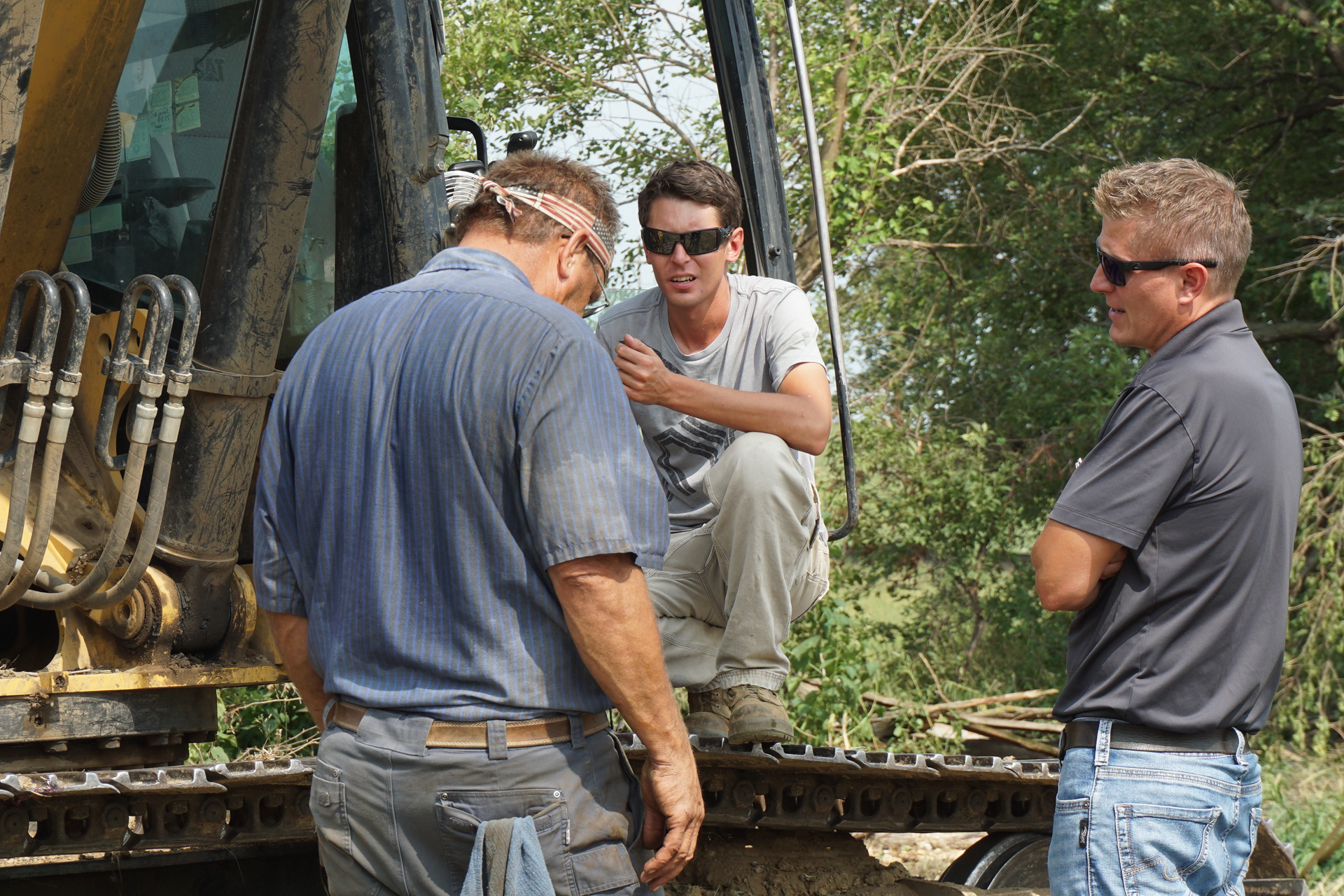
Pruss Excavation jobsite huddle.“A lot of contractors would just chase the flood work,” he adds, “but Matt stuck around, and he kept the job moving. It was a big deal. Matt knows he can’t just be an owner and pick up a paycheck. He’s very involved and he drives the ship on their modeling.”
This flood remediation experience came into play when the company bid on an emergency $1.05 million contract with a 144-hour turnaround. The job required over 33,500 tons of materials to be imported to close a breach that was 350 feet long and over 25 fee deep with flood water still flowing through it. “We had a pre-bid meeting at 1 p.m., they wanted bids at 4 p.m. and would sign the contract at 4:05 p.m.,” Matt says. “We were low by $11,800 and got it done early.” The project required a dozen operators and 30 trucks.
“A week later we were low bid on another fast-track levee repair,” Matt says. “We were low by $55,000 on a $2.8 million contract with a 168- hour completion. We successfully completed that repair on-time as well.”
Matching fleet to job demand
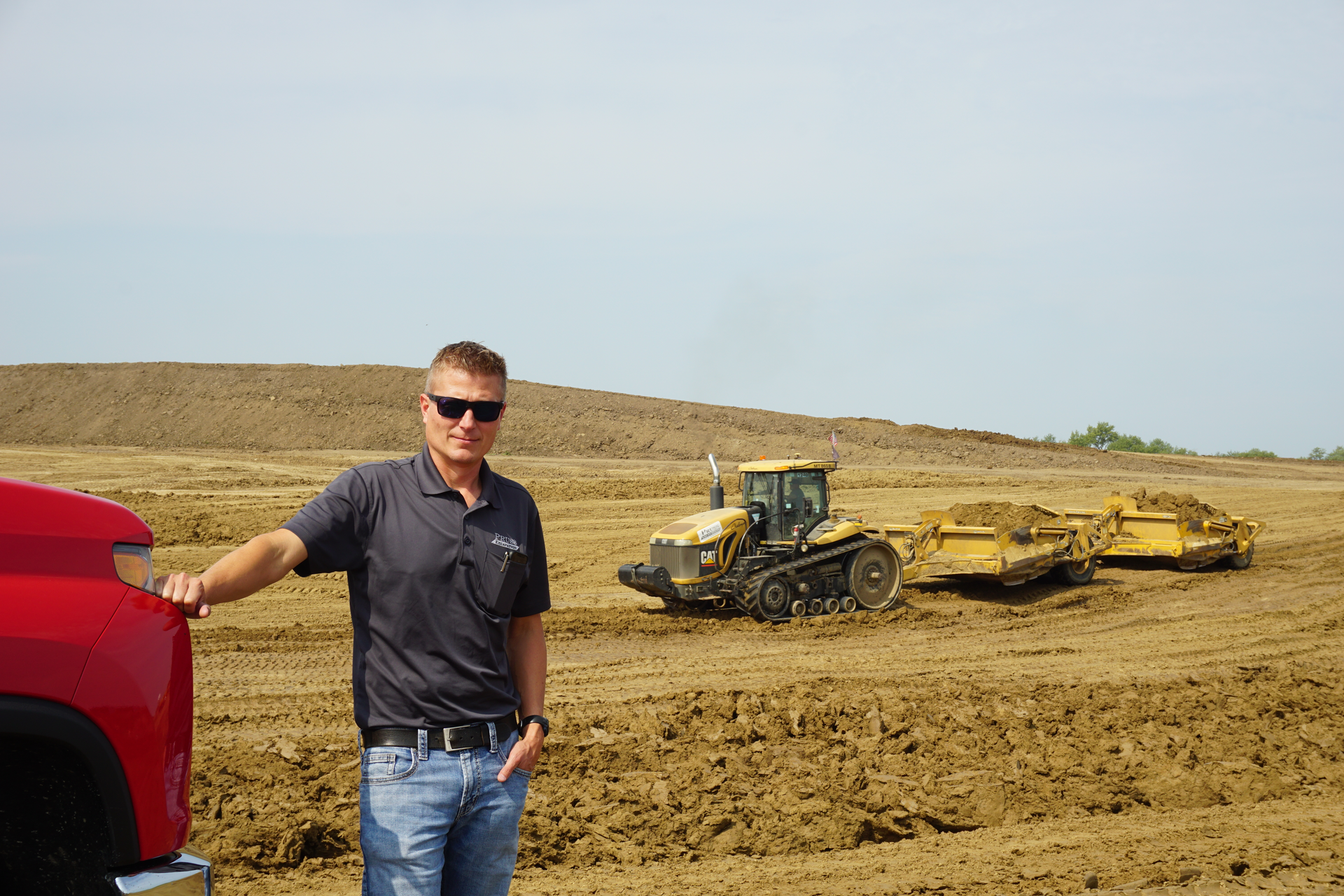
The company’s fleet of pull-behind scrapers — now at 32 — has helped them tackle wet conditions.
“We have had more machines than people throughout the years, and we’re still that way,” Matt says. This also allows Pruss Excavation to stage an upcoming jobsite while finishing another and thus lessen time spent on mobilization.
Its fleet of pull-behind scrapers now numbers 32. “Pull-types are awesome in the wet and the sand,” Matt says, noting that the company also uses Cat 627 self-propelled scrapers in drier conditions.
Although the bulk of his fleet is in the large machine category – including dozers, excavators, articulated trucks, scrapers and scraper tractors – Matt also uses skid steers as support machines. “We’re also heavy into Topcon GPS,” he says, “and in addition to dozers, scrapers, and motor graders, we also put the excavators on grade control. We’ve found it very user friendly.”
While operators are responsible for daily greasing, Pruss uses NMC to handle PM tasks. “They’ll service my entire fleet, no matter the brand,” he says. Engine, transmission and other major repairs go to dealers.
Today’s machine telematics also help with service, he says. “When we get a warning, dealers can diagnose and know where the machine is and what they need to fix it.”
But he’s also learned these convenient diagnostics can eat up tech time if an easy fix is not readily apparent. “I always press my dealers for warranties that cover diagnostics,” Matt says. “I don’t want to be billed for the time it takes them to figure out a problem.”
Legacy
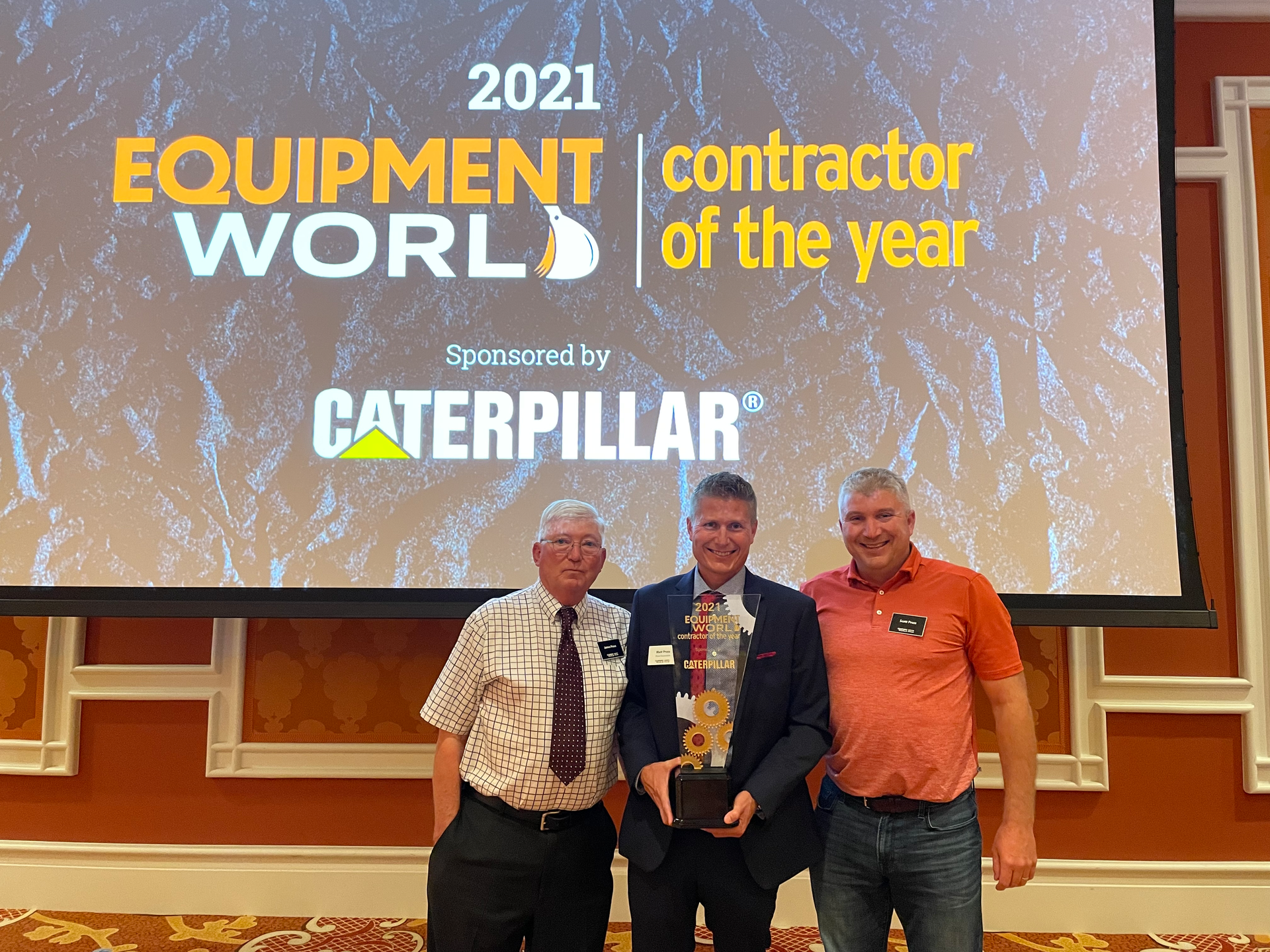
Father Jim Pruss (left) and brother Scott Pruss (right) flank Matt Pruss at the Contractor of the Year event.
Being named the 2021 Contractor of the Year has special resonance for Matt: His father, Jim Pruss Jr., was named a Contractor of the Year finalist in 2004. Both his father and brother attended the Contractor of the Year event last month and witnessed his win.
Neither is surprised he came away with the award. Matt’s clients and vendors also notice his attention to detail in how he approaches his jobs.
“He’s a heck of a businessman,” says his dealer representative Kevin Peterson with NMC. “And you can see it in the way he’s grown.”
“They know the type of leadership it takes to run a great small business,” says Ridder. “They just get it done.”
“We let our work to speak for us,” Matt says. “We want to under-promise and over perform instead of the other way around.”
Watch Matt Pruss receive the Contractor of the Year award below:
CMSBrowserComponents.load({ el: ‘#vue-1635193269032-615’, name: ‘OEmbed’, props: {“mountPoint”:”/__oembed”,”url”:”https://www.youtube.com/watch?v=PW21SPuw1TQ”,”attrs”:{“type”:”oembed”,”id”:”https://www.youtube.com/watch?v=PW21SPuw1TQ”,”element”:”aside”}}, hydrate: false });
2021 Equipment Rentals Up 3%, But Hang On for Big Growth Next Year
Rental equipment revenue will grow a moderate 3% over 2020 through the remainder of 2021 – but hang on in 2022.
The American Rental Association says it now expects the combined construction/industrial and general tool rental revenue to grow by almost 10% next year, reaching a record $52.4 billion. That number even tops the rental industry’s 2019 height of $50.9 billion.
The news is even brighter for the construction equipment segment, which ARA forecasts will grow 12.3% in 2022, reaching $38.7 billion. ARA says it did not include the impact of the proposed infrastructure bill now making a tortuous path through Congress in its calculations.

American Rental AssociationJohn McClelland, ARA vice president for government affairs and chief economist, says most of the benefits of increased infrastructure spending will not occur next year since it takes time for projects to be approved and funding obligated. IHS Markit, which produces the ARA forecast, will incorporate the infrastructure spending “once we have a clear indication of final passage” of the bill, McClelland says.
IHS is monitoring the market to see to what degree inflation which has not been an issue for more than a decade is inflected in rental-rate increases.
ARA also issues a five-year projection with each forecast. It now projects rental revenues to grow 5.5% in 2023, 2.5% in 2024, and 3.3% in 2025 to reach $58.6 billion.
ARA says rental companies slashed construction equipment and general tool capital expenditures by 44.4% in 2020, dropping equipment investment to $7.64 billion. Now on the rebound, ARA predicts equipment investment will grow by 36.2% this year to $10.4 billion, followed by another 36% increase to $14.2 billion in 2022. Additionally, this investment will grow by 10.9% in 2023, 2.3% in 2024 and 3.8% in 2025 to total more than $16.6 billion, according to ARA.
Did you miss our previous article…
https://www.tortowheaton.com/?p=568
Cat 578 Forest Machine Boosts Operator Comfort, Productivity

Caterpillar upgraded its 568 Forest Machine with new features to boost productivity, comfort and safety and reduce maintenance time and cost.
With a 347-horsepower Cat 9.3B diesel engine, the 568’s electrohydraulic control system puts out 10% more swing torque and 14% more drawbar pull, which makes grabbing and moving heavy logs faster. Smart mode controls match engine output and hydraulic power to the load resulting in 5% lower fuel consumption.
The reinforced certified forestry cab structure and 1.25-inch-thick polycarbonate windshield protects you from logs and limbs that may break loose while loading. The interior of the heated and cooled cab has been increased 25%, which allows most operators to stand up without hitting their head. Cat also narrowed the cab pillars and added larger panoramic windows and a flat hood to give you 50% more visibility. For cab access, you have the option of side or rear entry. A rearview camera comes standard, and three cab riser heights are available: 22, 48 and 72 inches. For easy transport, the cab tilts with hydraulic assist.
The new electrohydraulic control system eliminates the need for a pilot filter and pilot oil. Fuel-filter change intervals have been pushed out to 1,000 hours, double the life of the previous model. And the hydraulic-oil return filter offers a 3,000-hour service life, 50% longer than the previous forest machine. The on-demand cooling fan works only when needed, and the fan reversal can be programmed to come on at different intervals to clean out debris.
If you’ve grown to like push-button start on your truck, you’ll appreciate the same option on the revamped 568. Starting can also be accomplished with Bluetooth key fob or a unique operator ID function. With the operator ID, you can program the machine to remember individual settings and attachment preferences using the 10-inch-high resolution touchscreen.
If you’ve had trouble locating attachments in the past, Cat’s PL161 Attachment Locator can help you find where you last put your work tool, even if it’s overgrown with debris or vegetation.
Given that many forestry operations are in extreme cold or hot weather, the Cat 568 boasts a cold-start capability down to minus-32 degrees Fahrenheit and in hot weather up to 126 degrees. And should your contract call for cutting trees high up in the mountains, the 568 will operate without derating at altitudes up to 9,842 feet above sea level.
Cat 568 Quick Specs>
Engine: 347 hp>Operating weight, forestry: 104,280 lbs.>Operating weight, log loader: 105,380 lbs.Max reach, forestry: 38 ft. 4-in.Max reach, log loader: 2 ft. 5 in.Drawbar pull: 84,978 lb.-ft.Swing torque: 120,222 lb.-ft.
Did you miss our previous article…
https://www.tortowheaton.com/?p=565
Snyder Wins AEMP Technician of the Year: “He’s motivated by big jobs and challenges.”
Chase Snyder of Manatee County, Florida, has been named the 2021 Technician of the Year by the Association of Equipment Management Professionals Education Foundation.
Coworkers and supervisors at Manatee County government described Snyder as always willing to tackle the big mechanical problems, having a strong work ethic and constantly looking for ways to save taxpayers’ money.
Snyder is a senior fleet technician for Manatee County’s landfill shop, where he has worked for three years.
“The bigger the job, the better. The bigger the equipment, the better,” said Tracy Brooks, maintenance operations chief for the Manatee County Fleet Department, in describing Snyder’s attitude. “Given the choice of a light-duty repair or going to a call-out on a hill for a broken down compactor, he will choose standing ankle-deep in trash sludge every single time.”
Speaking during the awards ceremony Wednesday at the AEMP EquipmentShift Conference in Savannah, Georgia, Brooks added:
“It’s in his blood and he just enjoys it. Because he enjoys his job so much, it makes him better at what he does.”
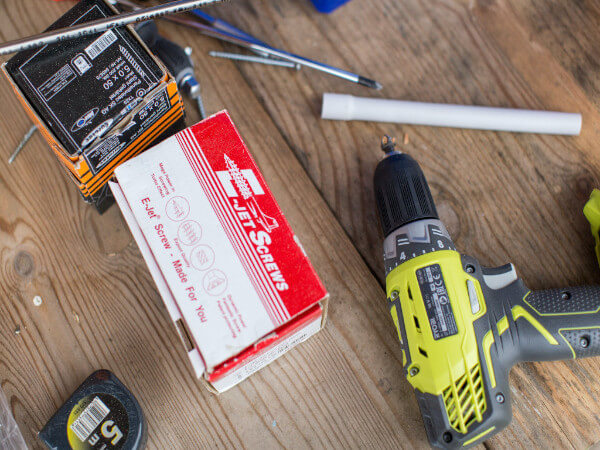
Chase Snyder, AEMP tech of the year, enjoys working on heavy equipment, like this large mower attachment.Manatee CountyThe county’s landfill shop tracks and keeps running more than 170 pieces of equipment, everything from golf carts to heavy-duty construction equipment. Snyder can fix and maintain it all, but his favorite is the yellow iron: excavators, landfill compactors, dozers and motor graders.
He’s always been fascinated by the heavy construction equipment, but the local trade school, Manatee Technical College, offered a degree in general automotive maintenance, not heavy diesel equipment. So he got his start on the automotive side in college and worked full time during the day on transit buses for a nearby municipality. After college, he landed at Manatee County.
His supervisor, David Alligood, remembers the job interview with Snyder at Manatee County. “We knew then that we had someone special,” he says.
Alligood should know. He was the 2020 AEMP Technician of the Year.
“He has a very strong work ethic,” Alligood adds. “He’s motivated by big jobs and challenges. His focus on the county’s budget and smart spending makes him an asset to our team. He is constantly self-educating.”
Coworker Christopher Brooks described Snyder as easy to get along with, smart and a talented technician. “He’s a go-getter – never says no to anything. If you ever need a hand, he’s willing to help you. He knows the equipment very well.”
Another colleague, who also worked with Snyder at the transit bus shop, says Snyder is always available to lend a guiding hand. “If I have a question, he always takes a few minutes to explain…how something works. He also keeps a great attitude, not only helping me but everyone in the shop.”
The Technician of the Year Award by the AEMP Education Foundation has been presented each year since 1989 to “the individual who exemplifies the heavy equipment profession’s best technician.” The award seeks candidates who constantly update their education, demonstrate a strong safety record, improve fleet operations and are always professional.
As this year’s winner, Snyder will receive a custom-built John Deere toolbox and merchandise and complimentary one-year membership to AEMP. He will also be the subject of an in-depth cover story on equipmentworld.com.
Deere has sponsored the award for 32 years.
Did you miss our previous article…
https://www.tortowheaton.com/?p=562
PCL Civil Constructors Cited After N.C. Bridge Worker’s Death
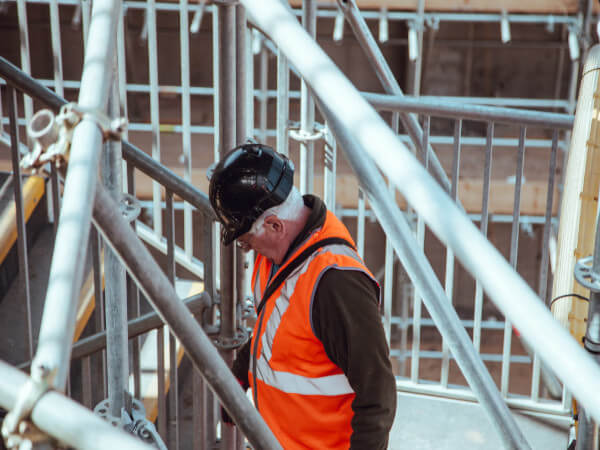
The investigation into a worker’s death on a bridge demolition project at the Outer Banks of North Carolina has resulted in a proposed penalty of $23,210 for the contractor.
PCL Civil Constructors, based in Tampa, Florida, overloaded bridge sections, exposed workers to struck-by hazards and failed to use engineering surveys or calculations to prevent collapse, according to the U.S. Occupational Safety and Health Administration.
Jose Armando Maqueda Mejia, 42, of Manns Harbor, North Carolina, died April 14 after he fell more than 50 feet into the Oregon Inlet when a remaining section of the Herbert C. Bonner Bridge bridge collapsed. The bridge was built in 1963 and was being demolished piecemeal after the new Marc Basnight Bridge opened in 2019 as its replacement.
Mejia, a welder, was cutting crossbeams on top of a bridge section where concrete had been discarded, OSHA says. The weight of the concrete caused the section’s collapse and Mejia’s fall, the agency reports.
According to the OSHA citation, PCL used “different demolition sequences, and developed its own plan, without performing any engineering surveys and calculations to determine the adequacy of the structure and the potential for unplanned collapse of any portion of the structure during demolition.” It added that workers “were exposed to struck-by hazards.”
The citation also said the structural members of the bridge’s last two spans “were overloaded beyond their load-carrying capacities.”
The two violations are deemed “serious” by OSHA, which means a hazard exists that could cause an accident that would most likely result in death or serious harm.
“PCL Civil Constructors violated federal safety standards and a worker needlessly died as a result,” said OSHA Area Director Kimberley Morton in Raleigh. “If they had followed well-known standards, this tragic loss of life could have been prevented.”
PCL won the $252 million contract to build the 2.8-mile Marc Basnight Bridge to and from Hatteras Island and to demolish the Bonner Bridge.
A PCL spokesperson said the citation is under review, and its policy is not to comment while it is still pending.
The company can request an informal conference with OSHA within 15 working days to contest the proposed penalty.
Did you miss our previous article…
https://www.tortowheaton.com/?p=549
Industry Roundup: Yanmar, ASV Add Four Dealers
Yanmar Compact Equipment and its company ASV Holdings have added four new dealers and a total of 15 new locations to its network.
Incoming dealers include Mid Country Machinery, Syracuse, New York; Woodco Machinery, Woburn, Massachusetts; Alta Equipment, Livonia, Michigan; and Quality Equipment and Parts, based in Lake City, Florida.
Woodco will cover the two product lines in three Massachusetts locations as well as one branch in Rhode Island. Alta adds the lines in three Michigan and three Florida locations. In addition, existing dealer Romco Equipment has has added three new locations in Texas.
The dealers will carry Yanmar’s compact excavators, tracked carriers and wheel loaders, and ASV’s compact track loaders and skid steers.
MANUFACTURERS, SUPPLIERS
Randall-Reilly names Manthey CTO

MantheyRandall-Reilly has named Keith Manthey as its CTO, charged with helping the technology and analytics company continue its growth and innovation trajectory. Matheny comes to Randall-Reilly most recently from Dell Technologies, where he served as a global CTO and as one of their artificial intelligence and analytics leaders, and Equifax, where he led their Data Platforms Group building their data factory systems.
“In our search for the right candidate to fill this role, we focused on finding a ‘growth CTO,’ someone who would help us continue to infuse leading edge analytics and value-added features into our product platforms,” says Randall-Reilly CEO Matt Reilly. “In addition, we were looking for someone with deep experience collaborating across divisions and with clients and who has experiences as a leader in companies in growth mode. Keith delivers on all fronts.”
Manthey will work with the Randall-Reilly team to build consumer-grade user interfaces and leverage analytics to provide new insights into trends, pricing, or useful industry patterns.
CNH temporarily closes several European plants
Production has temporarily been suspended at several of CNH Industrial’s European agricultural, commercial vehicle and powertrain manufacturing facilities.
The owner of Case and New Holland Construction Equipment says it’s facing ongoing disruptions to the procurement environment and shortages of core components, especially semiconductors.
CNH plans to resume production within eight working days.
Vacuworx names Cunningham VP of sales
Vacuworx has promoted Charlie Cunningham to vice president of sales. He formerly served as senior director of sales for the North America region.
Cunningham will be responsible for managing U.S. dealer sales and development. He will report to Bill Soloman, president of Vacuworx. Cunningham joined Vacuworx in January 2020 and has more than two decades of industry experience in sales management, product training and business development.
Vacuworx’s products include vacuum lifting and material handling equipment for the oil and gas pipeline and construction segments.
JCB Unveils Its Tallest Telehandler, the Rotating 512-83R
JCB is going bigger and taller with its new eight-story-high rotating telehandler, the 512-83R, which it calls three machines in one.
JCB says it can also serve as a crane or be equipped as an aerial work platform.
The telehandler has a max lift height of 83 feet and a max lift capacity of 12,000 pounds.
The company designed the machine for the changing jobsite in which larger loads need to be lifted to greater heights. JCB has modular home and building construction in mind for the 512-83R, but also says it can be used for any construction site dealing with suspended loads. It is also designed for the rental market, with simple, intuitive controls, and can be used for infrastructure projects, such as bridge work, or in urban areas with little space.
“It’s perfect for lifting and placing materials, panels and modular components at height in a very safe way and in a very productive manner,” said Tim Burnhope, JCB chief innovation and growth officer.

The JCB 512-83R rotating telehandler can also serve as an aerial work platform.JCBThe telehandler delivers continuous 360-degree rotation and is designed for fast setup, as its outriggsers can be automatically extended in 26 seconds and retracted. “Unlike the mobile crane, the [512-83R] can be set up on the site rapidly with outriggers that can be deployed, stored and leveled at the touch of a button,” Burnhope said during the product’s online unveiling.
The telehandler can also be operated by remote control.
Available attachments include pallet forks, rotating forks, winches, a lifting hook and a light-duty bucket. The attachments use radio-frequency identification, or RFID, so the correct load chart for the tool automatically pops up on the telehandler’s 7-inch screen.
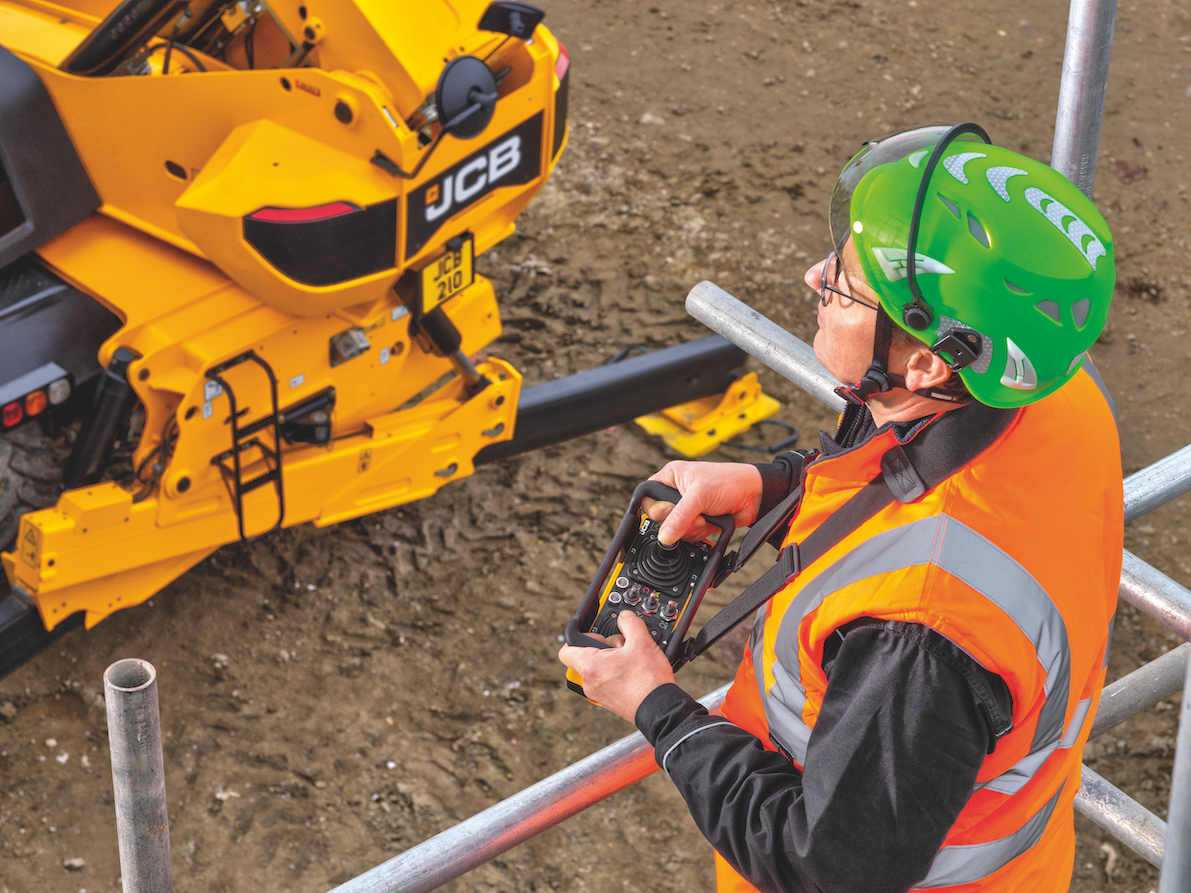
The JCB 512-83R rotating telehandler can be operated by remote control.JCBThe four-section boom with one telescopic cylinder has a low profile for better operator visibility. A camera can be mounted to its head, so the operator can see better when placing loads at height. The boom can lift up to 4,400 pounds to max height and up to 660 pounds at full horizontal reach, which is 70 feet.
The telehandler runs on a 145-horsepower JCB EcoMax diesel engine and a two-speed hydrostatic transmission. It can travel up to 25 mph and has three steering modes. Turning radius is under 10 feet. Four-wheel drive is available for off-road work.
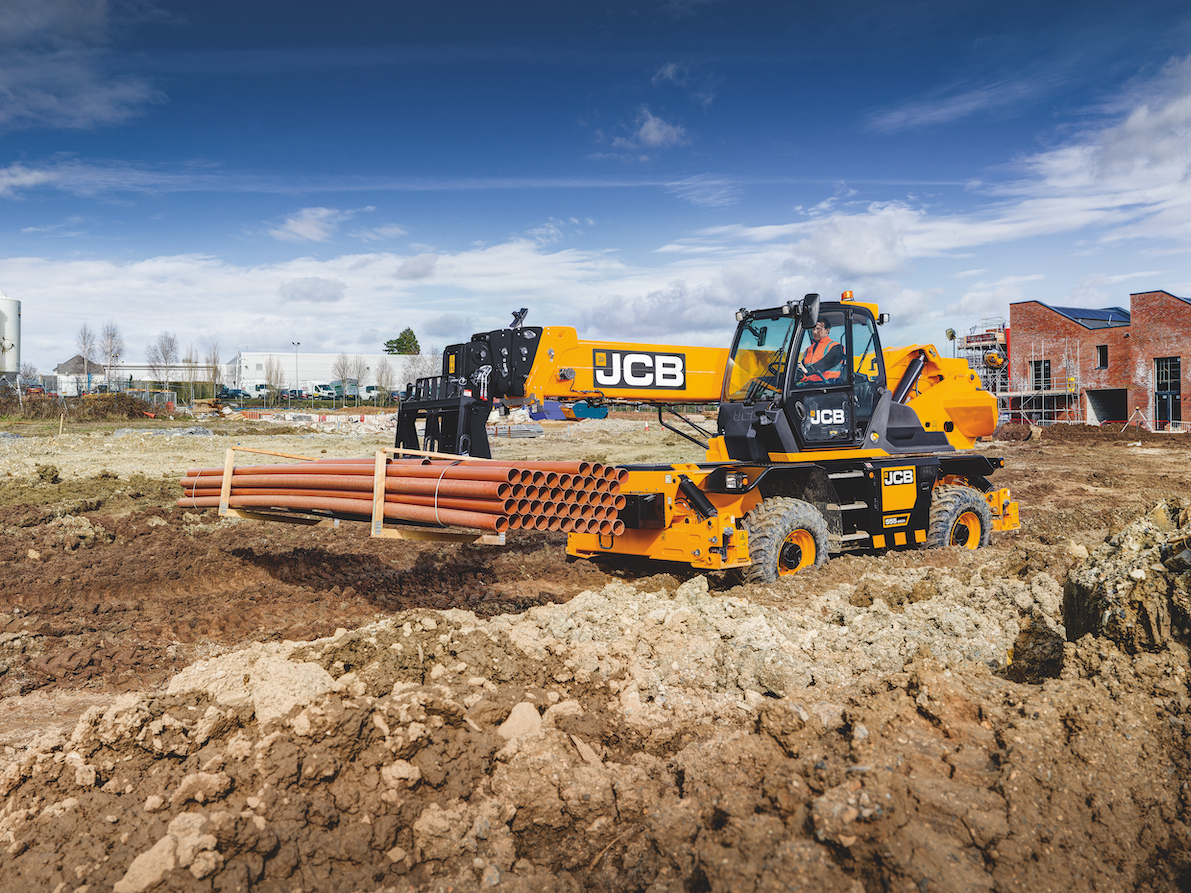
JCB 512-83R rotating telehandlerJCBThe engine and the machine’s service points have been placed at ground level for easy access. Service intervals are at 500 hours. Seating options are available for the cab. Work lights and camera kits are optional. A five-year subscription to JCB LiveLink telematics is standard.
JCB says it is currently taking orders for the 512-83R.
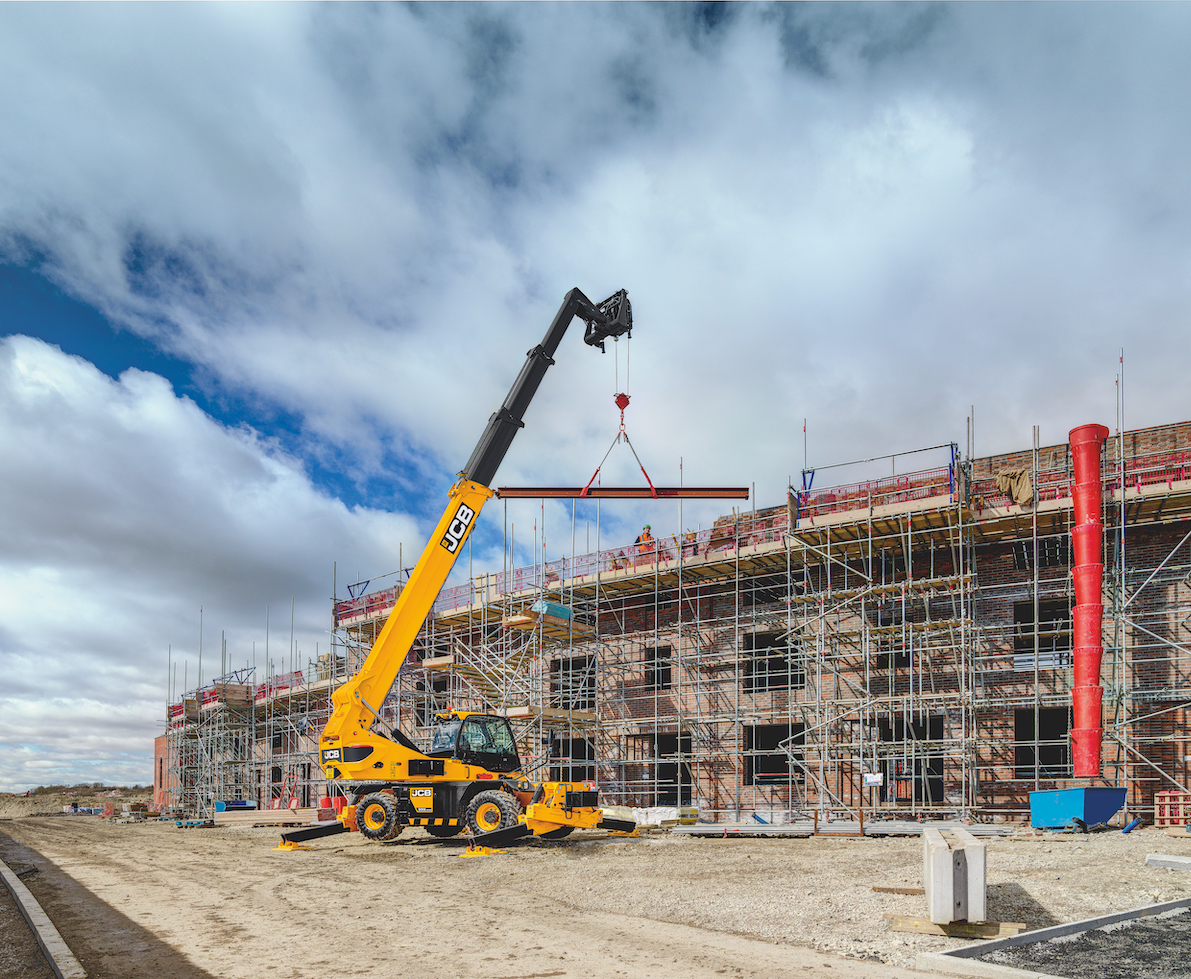
JCB 512-83R rotating telehandlerJCB
Did you miss our previous article…
https://www.tortowheaton.com/?p=494
Thunder Creek’s Intros Service and Lube Upfit for Medium-Duty Trucks, No CDL or HAZMAT Required
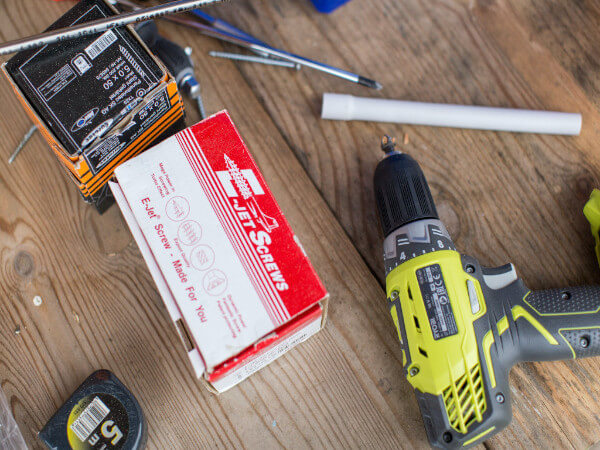
Thunder Creek Equipment’s new Service and Lube Upfit (SLU) for medium-duty truck bodies doesn’t require drivers to have CDL or HAZMAT certifications, saving customers from increased insurance costs, and the cost of hiring highly sought after CDL drivers.
The new product, launched at The Utility Expo in Louisville, Kentucky, allows for customization much like the company’s Service and Lube Trailer, but with the nimbleness of a medium-duty service body.
Smaller than a traditional service and lube truck, the SLU can be installed on a Ford F-550 or Ram 5500 chassis. “Dealers, rental companies and construction companies are having a hard time hiring technicians and CDL drivers. Plus, they’re finding out they’re not being profitable sending out a $300,000 truck with a $40-an-hour employee to do a simple oil change,” said Steven Ile, territory sales manager, Thunder Creek Equipment. “This affords them the ability to put anybody with a valid driver’s license and basic technical skills in the truck and go.”
A built-in VMAC air compressor powers the entire SLU pneumatic pumping system. The tanks provide a total capacity of 690 gallons and are configurable in 115-, 55-, and 25-gallon tanks, depending on a customer’s fleet maintenance needs.
Fluids supported include fresh oil, reclaimed oil, grease, antifreeze, reclaimed antifreeze, high flow oil, diesel fuel and diesel exhaust fluid. “It is 100 percent customizable,” said Ile. “If one customer needs 345 gallons of fresh oil and 345 gallons of waste oil because they’re only changing oil, we can do that. If the next customer is running Deere, CAT and Komatsu equipment and needs three different spec oils, we can break that up into multiple tanks and give them more fluids.”
All fluid maintenance systems are plumbed into the truck’s new Utility Box, which features a streamlined control panel. The control panel is color coded to match the nozzles and hoses, making it easy to use for operators and reduce training. The SLU also features ample storage for filters and tools.
Each SLU is built to order. Customers can purchase the Service and Lube Upfit via select dealers or directly from Thunder Creek Equipment.
Did you miss our previous article…
https://www.tortowheaton.com/?p=480
Polaris Launches Mid-Size Pro XD UTV as a Truck Alternative on the Jobsite
Polaris has rolled out a new mid-size entry to its Pro XD Commercial lineup of UTVs, designed for hauling workers and tools around construction sites.
The mid-size UTV, which stands for utility terrain vehicle, comes in two- and four-door versions and features a bed with a 500-pound capacity. Polaris touts the new all-terrain vehicle as a lower-cost alternative to a truck or van for moving about the jobsite. Its compact size enables it to maneuver in tight spaces.
Along with hauling tools and people, it can move supplies, aggregate and other materials. The company says it can also handle mud, nails and obstacles better than a truck or van when traveling the jobsite.

Haul aggregate and other materials with the 500-pound capacity bed on the Polaris mid-size Pro XD UTV.PolarisThe mid-size vehicle follows the introduction of the company’s full-size Commercial models in 2018. It’s made for those who don’t need the 1,000-plus-pound bed capacity of the full-size UTVs. Polaris says the mid-size version provides 200-hour oil service intervals, as well as the same safety features of the full-size models, including adjustable speed calibration, operator warnings, backup horn and pedestrian alarms, high-visibility lights and improved operator visibility.
“Not all of our customers need to haul over 1,000 pounds in the cargo bed, but they still want a heavy-duty driveline, 200-hour intervals between oil changes, durable components and vehicle fault alarms,” says Aaron Stegeman, director of commercial sales, service and customer experience for Polaris Commercial.
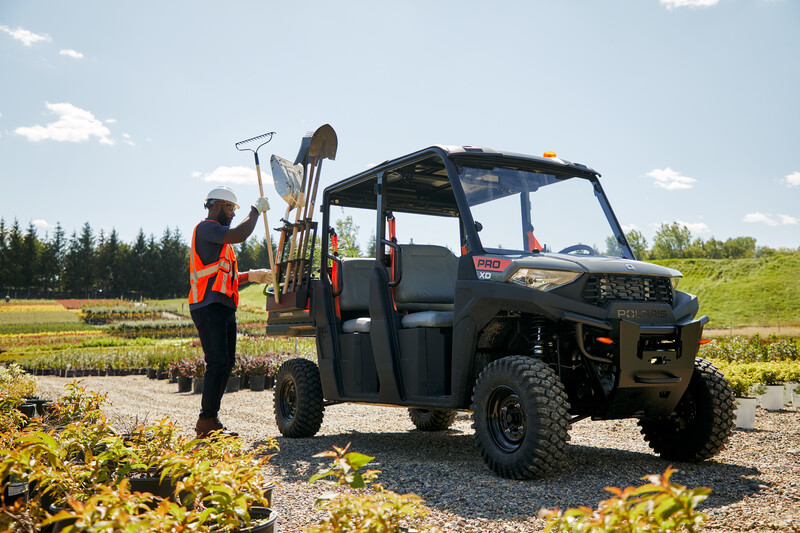
The mid-size Polaris Pro XD UTV is also designed for carrying tools around on the jobsite.PolarisThe mid-size Pro XD features heavy-duty driveline components for longer life. The seats are made of Kevlar-backed vinyl that is puncture resistant. The heavy-duty jobsite tires are 8-ply with nondirectional treads. Parts are designed to be universal and easy to replace. The company also says it made the roof and doors as tightly sealed as possible to keep out dust and the elements.
The UTV runs on a 39.5-horsepower Polaris Pro Star 570 DOHC (dual overhead cam shaft) gas engine.
Both the two-door and four-door models have selectable 4×4 drive. Top speed is adjustable up to 40 mph. Ground clearance is 10 inches.
Total payload is 1,000 pounds on the two-door model and 1,250 on the four-door UTV. Towing capacity is 1,500 pounds.
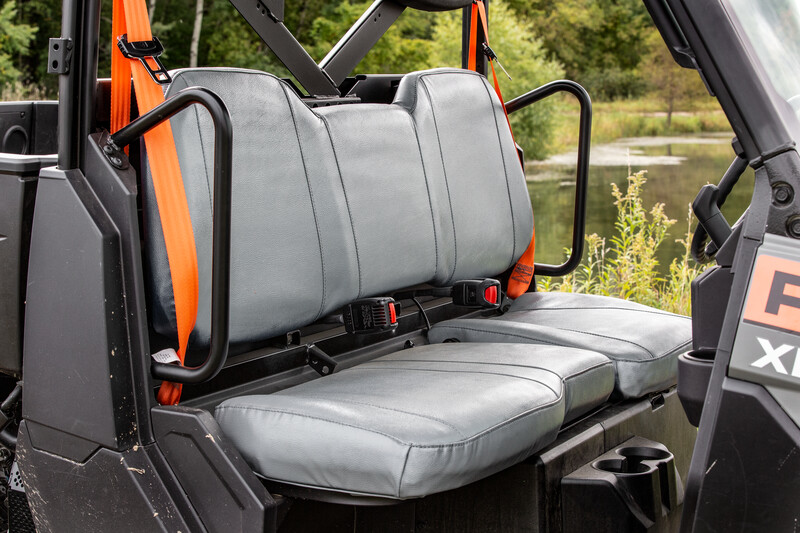
The seats in the new mid-size Polaris Pro XD UTV are made of Kevlar-backed vinyl for puncture resistance.PolarisThe MSRP on the two-door model starts at $12,499, and for the four-door at $13,999.
Available accessories include various types of windshields, a windshield wiper and washer system, various types of roofs and roof liners, doors, rear window panels, lighting, sideview mirrors, among other add-ons.
Did you miss our previous article…
https://www.tortowheaton.com/?p=468
From Beaches to Bases, This N.C. Contractor Loves to Move Dirt
Two things you quickly learn about Matt Mitchell is that he loves Sneads Ferry, North Carolina, where he has lived all his life.
And he loves dirt.
“A grown man might be a grown man, but somewhere deep down he’s still got a little boy in him,” he says. “And they all like to play with little toys and dirt.”
“I love the challenges,” he adds, when explaining why he loves being a contractor. “I really like doing the things they say you can’t do, or can’t be done.”
That attitude has led his business, C.M. Mitchell Construction Company, to grow to more than 50 employees, 35 pieces of equipment and annual revenues of $10 million to $13 million. For that and more, Matt is one of Equipment World’s 2020 Contractor of the Year Award finalists.
Hard lessons
Matt learned about hard work, honesty and integrity from his father, a retired Marine who had been stationed at nearby Camp Lejeune. His father and mother ran a little country store and tackle shop on Vultures Landing.
“Son, your word is all you’ve got,” his dad would tell him.
He helped instill a strong work ethic in Matt.
“As a Marine, he taught us how to work, and he taught us what our backs are made for,” Matt recalls. “When I was growing up, it was all back-breaking work. He wasn’t taking any shortcuts.”
They would also dig the graves for local residents who passed away. It was a free service his father started, and Mitchell Construction continues it to this day.
As a teen, Matt worked for a family friend who owned a construction company. Matt would run a dozer and excavator and drive a dump truck. He worked for him for about 10 years. Then the owner had a heart attack and sold the business.
Matt bought a commercial fishing boat, but that new career lasted only about 10 weeks. “I was there one day fishing, and I just said, ‘I’m done with this. I’m going back in the dirt business. I’m going to do it myself.’”
That was in 1994. He used the money from selling the boat to buy a farm tractor and a trailer. His parents co-signed for a $25,000 loan. Matt used that money to buy a 1974 dump truck, a backhoe and a dozer.
His brother Mel drove the dump truck, and Matt moved dirt. They cleared lots, put in driveway culverts, whatever people needed done.
He did a lot of subcontracting work and landed his first big job at Camp Lejeune. During that job, he met Theresa who was working for the general contractor on the project. She helped him with the paperwork, and he told her if she ever decided to leave her job, he wanted her to come work for him.
“I don’t think you can afford me,” she told him.
But in time he won her over, and they’ve been keeping C.M. Mitchell growing ever since.
With her as chief financial officer and Matt running the construction business, they’ve landed many multimillion dollar projects over the years.
Landing big jobs
The company won its first job over $1 million by traveling to Virginia to meet with a large construction firm. The company was planning a complicated project involving a 100-square-foot amphibious boat ramp at Camp Lejuene. Matt convinced them he could handle the work.
“We were so excited,” recalls Theresa. “We had a $2 million job.”

With Matt running the construction operations and Theresa running the office, the couple have built a successful construction firm in Sneads Ferry, N.C.Equipment WorldThey began hiring more employees. Along with the boat ramp, the project involved building docks, ponds and a parking lot, as well as installing sewer and drainage lines.
The work was going well, but the finances ran into trouble. Mitchell wasn’t getting paid by the contractor on the project, and the company needed the money to pay off the project’s financing.
The contractor eventually paid the $800,000 he owed Mitchell. But the stress of trying to collect it had left Matt and Theresa rethinking their business. “One minute you’re up there, and the next minute you could lose your home if somebody doesn’t pay you,” says Theresa. The couple were also raising their three sons at the time.
After another episode in which they had to take a contractor to court to get paid, they decided to reorganize and trim down. “We’re going to stop going after the big work,” she says. “Let’s gain control of what we’re doing.”
They became more cautious about the contractors they subbed for. They landed work with large contractors, which brought them multiple projects. And they paid on time.
“We were able to pick and choose who we worked for,” Theresa says. “We could do some background on them and make sure that the people we were trying to be a subcontractor for were of good character.”
Then the September 11 terrorist attacks caused the local construction economy to tank. Mitchell was able make it through with projects on military bases. Government projects also got them through the Great Recession.
In 2011, the company had grown to 40 or so employees. And Matt decided to scale back to about 25 workers. He started turning some of his attention toward other ventures. He opened a restaurant and a boat store. He bought two shrimp boats. He bought and renovated boats and sold them. Then he spent about five years building his own boat – all while still running his construction firm.
“I don’t know why this was going on,” says Theresa. She calls it his “nostalgia tour.”
Matt just laughs.
“But one thing about my husband,” she adds. “He has no hobbies. Everything he does has to generate revenue.”
Ramping back up
Meanwhile, the construction firm was doing well, holding steady. And eventually, many of the side ventures drifted away.
“Our real passion that really drives us is here,” Theresa says, referring to Mitchell Construction.
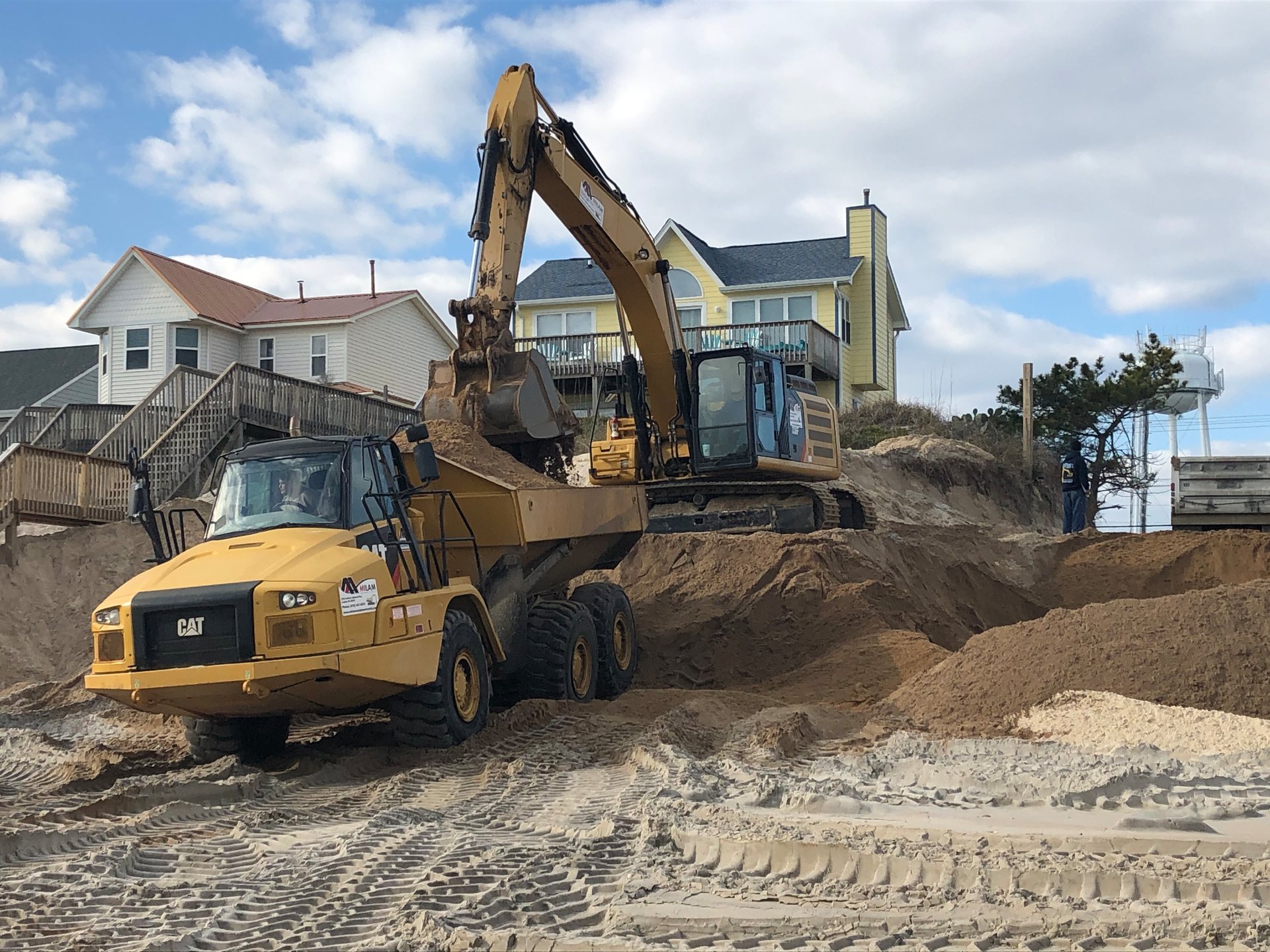
Dump trucks haul in sand and an excavator fills dump trucks on the beach to rebuild dunes in North Carolina eroded by Hurricane Florence.Equipment WorldTwo of their sons love construction work, and the couple want the company to be available for them.
The company has grown back to 50 employees. It updated its accounting software, switched to project management software and began using iPads on jobsites. They also increased pay and benefits to attract and keep good employees.
Along with the changes, the company has continued to benefit from Matt’s work ethic and quality standards.
“A lot of people really respect Matt,” Theresa says. “A lot of his employees respect him because he’s the type of guy who is out there in the ditch with them.”
The company also maintains a family atmosphere. Theresa cooks lunch each day at the office for employees. A number of the employees are actual family members.
Their oldest son, Mark, has worked with them since 2000 and recently branched out on his own to start a concrete business. Their youngest son, Matthew, is the company’s asphalt division supervisor. Matt’s two brothers and Theresa’s sisters also work for the company.
“We’ve always been a real tightknit family,” Matt says.
Moving dirt
One of Mitchell’s latest projects has been rebuilding the sand dunes on Surf City and North Topsail beaches, which had eroded during Hurricane Florence.
The projects involved hauling in and placing more than 200,000 cubic yards of sand. Mitchell dump trucks came and went hauling sand from miles away, while excavators and dozers moved like clockwork to build the dunes.
“I can move dirt, and I love moving dirt,” Matt says.
Surf City Town Clerk Stephanie Hobbs agrees.
“They’re a great company,” she says. “I would give them the highest rating you have. They show up in a timely manner and get the job done on time and on budget.”
Matt attributes his success to hard work and recommends the same for new contractors.
“You’ve got to work hard. You’ve got to put your time in,” he says. “When everybody else is off having fun, you’ve got to go make a deal with somebody.”
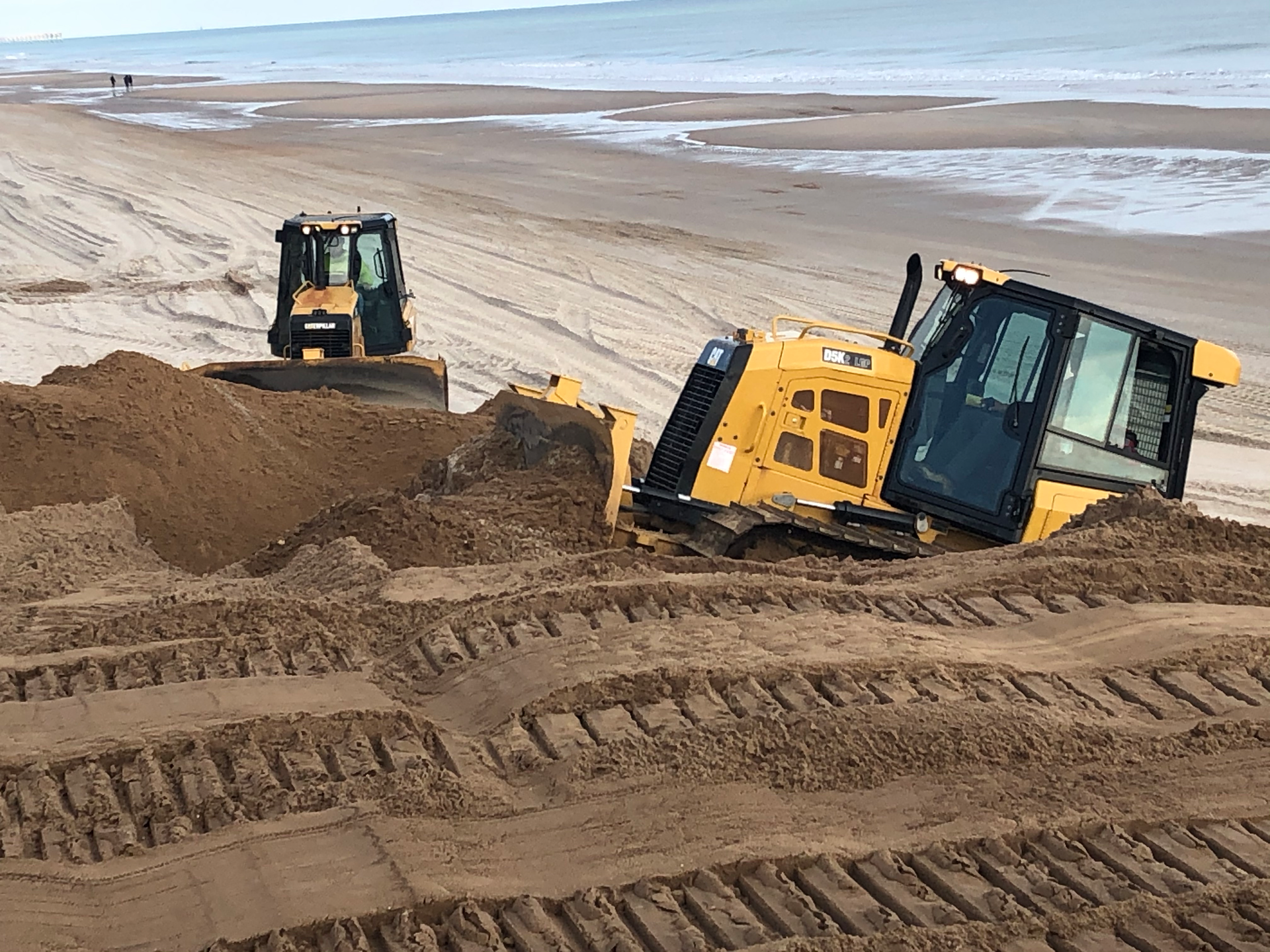
C.M. Mitchell Construction dozers rebuild dunes damaged by Hurricane Florence.Equipment World
Did you miss our previous article…
https://www.tortowheaton.com/?p=460